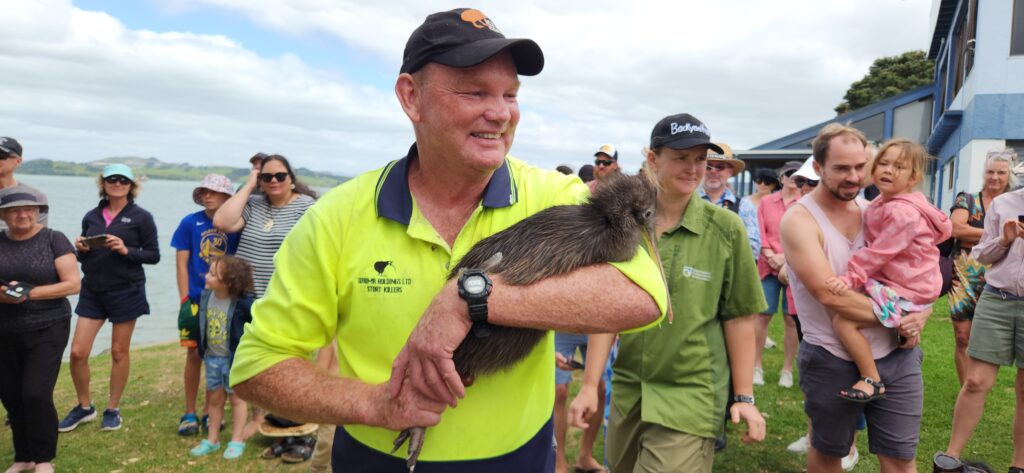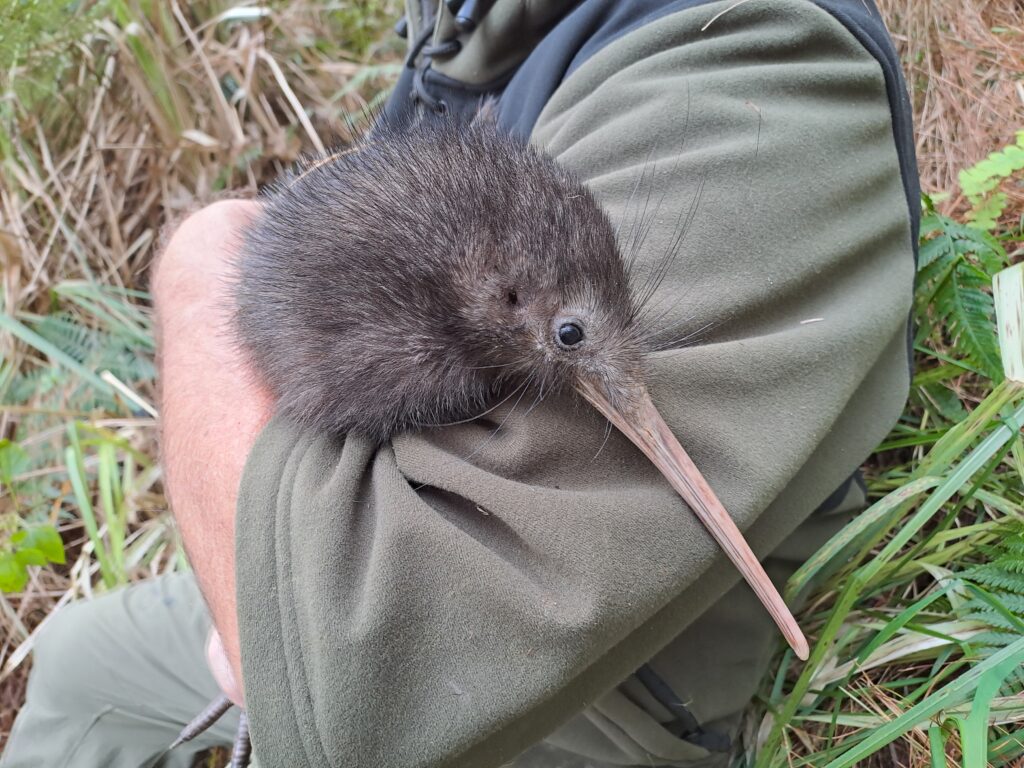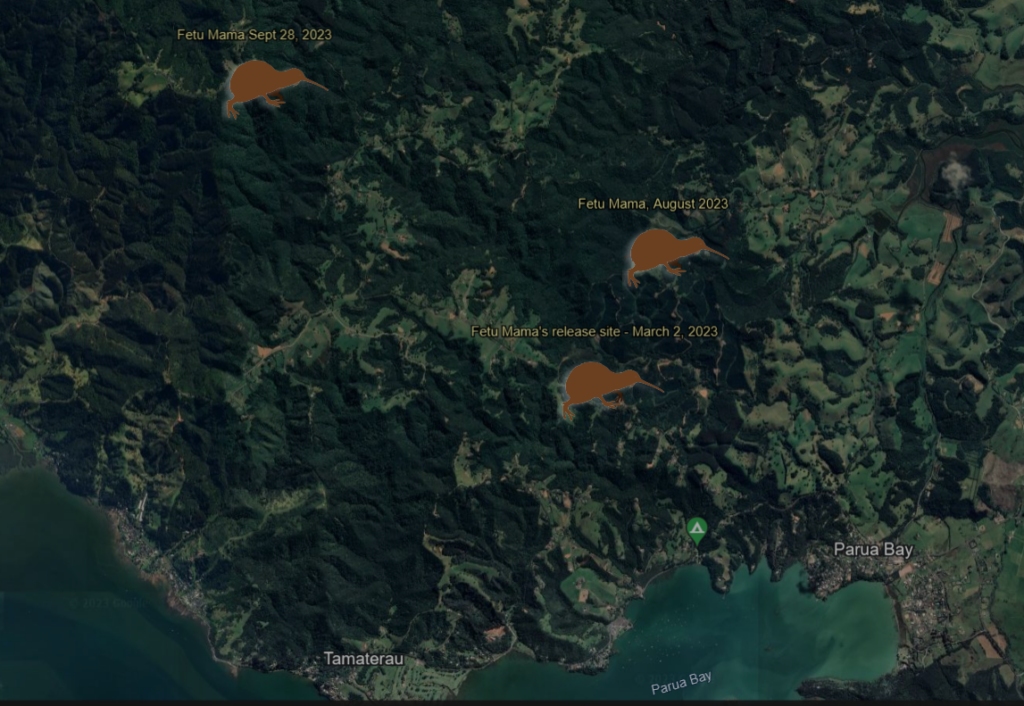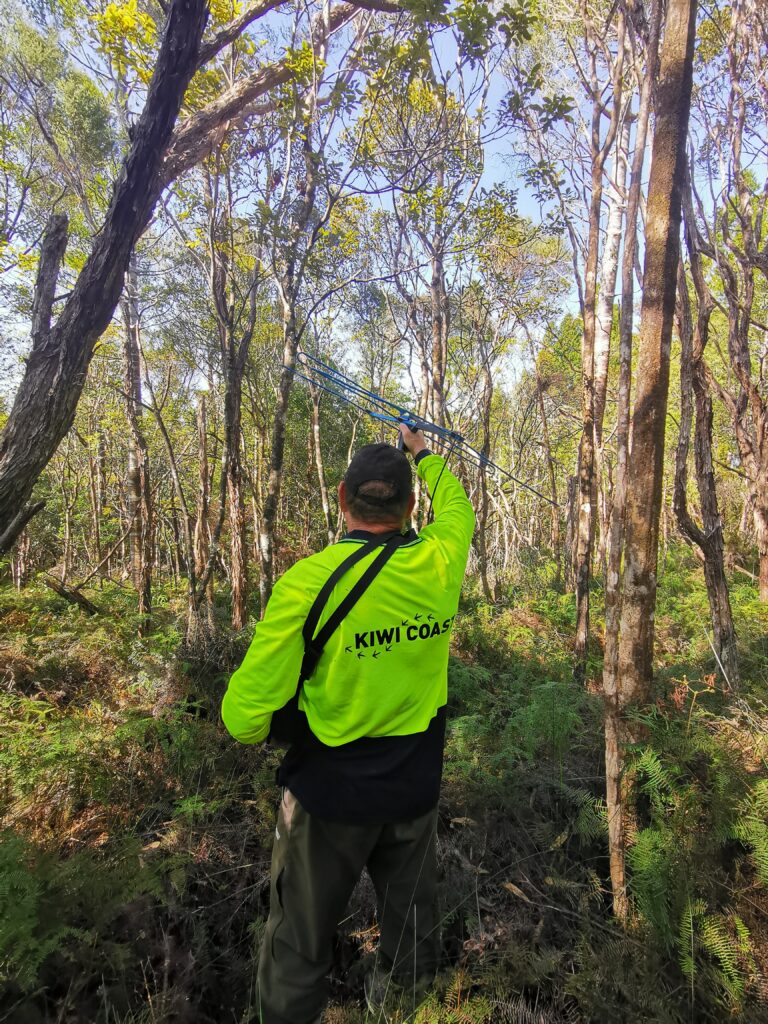Kiwi
A small number of wild Northland brown kiwi live and roam in the Kiwi Link area.
We aim to increase their numbers, chance of survival and breeding success by controlling exotic animal pests (predators such as ferrets, stoats and feral cats) and encouraging dedicated dog control. Without predator control, 95% of kiwi chicks are killed by stoats before they reach their first birthday.
In Northland, the greatest cause of adult kiwi death is dogs, whom seem to find the strong scent of this ground dwelling bird, almost irresistible. Northland brown kiwi should live for 50-60 years. However, research has shown that due to dog predation, their average lifespan has been reduced to just 14 years.
Kiwi Link’s key aim is to create a safe kiwi corridor between the kiwi strongholds of Whangarei Heads and Tutukaka. We work closely with Kiwi Coast and neighbouring community-led projects to do this, including the Tutukaka Landcare Coalition and Backyard Kiwi at Whangarei Heads. Most of our wild kiwi are free to roam and never handled. However, to monitor progress, a small number of kiwi wear leg-fitted radio transmitters that send out data to help us remotely track survival, breeding success and dispersal.
Meet two of the monitored kiwi – Chookie and Fetu Mama….
Chookie
Chookie is the namesake of a local landowner whose family has gone above and beyond to protect local kiwi.
A young, Northland brown male kiwi, Chookie has chosen a dog-free pine forest in Owhiwa as his home. Wild kiwi are slowly returning to this area, east of the Whangarei township, thanks to increased community-led pest control and dedicated dog ownership.
Chookie made headlines when he hatched his first chick in 2021 – the first known wild-hatched kiwi chick in the area for decades. In 2022, he did it again, successfully hatching another two chicks.
The mystery is – who is Chookie’s mate? Is she one of the scarce wild kiwi that has hung on in the area for a long, lonely time? Is she a kiwi on the move from the nearby Whangarei Heads peninsula where kiwi number in their thousands? Or is she a recently released old friend of Chookie’s from the Matakohe-Limestone Island kiwi creche?
You can become a kiwi sponsor and follow the life and adventures of Chookie by signing up to the Kiwi Coast ‘Follow a Kiwi’ Program. As a Follow the Kiwi Sponsor you will receive news, updates, photos and event invites FIRST!
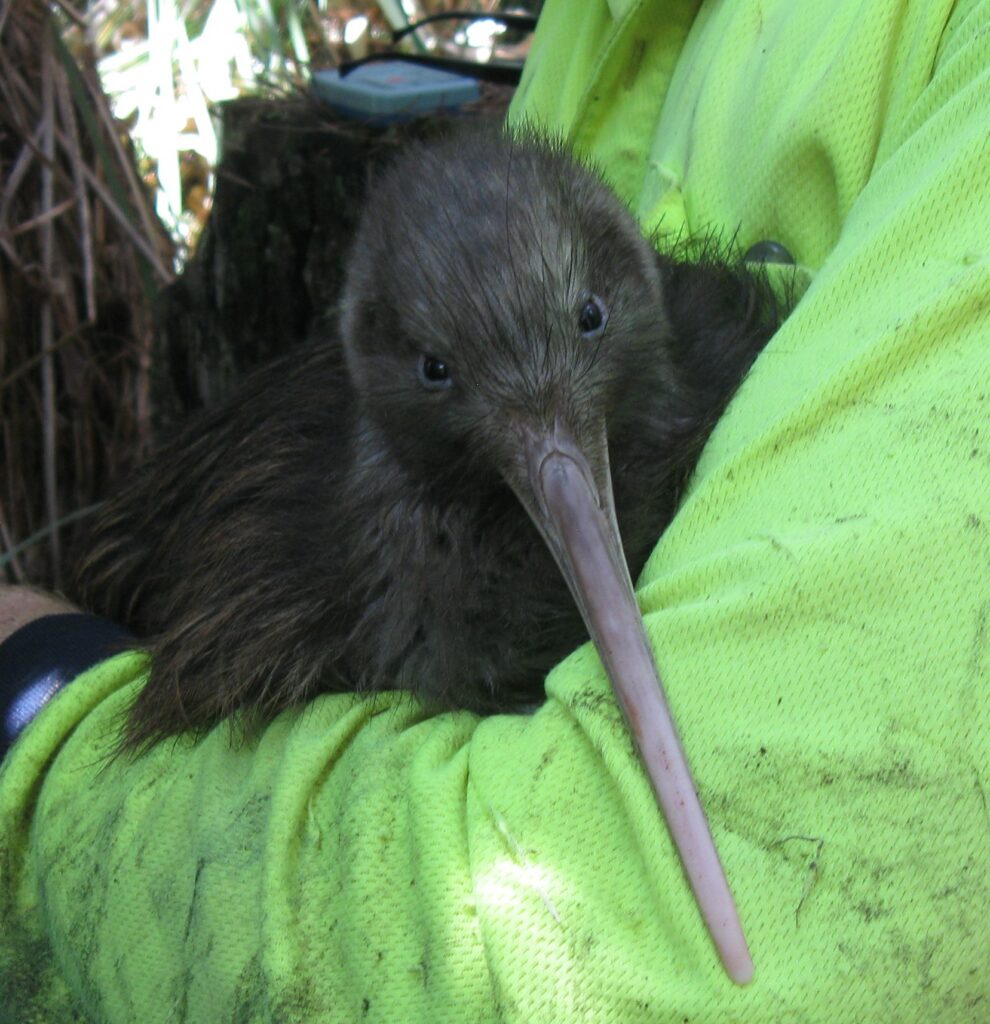
Fetu Mama
That evening, she went on to star at the Backyard Kiwi release event at Parua Bay with three of her fellow creche graduates.
By road, this is an 8km journey from her last known spot but a much bigger journey if you take all the hills, valleys, creeks and ridges into account.
The theory is that she stayed near her release area for 5 months because there were other kiwi nearby calling – she mustn’t have found any to her liking to pair up with as she reaches adulthood and has struck out in search of a mate. If she finds a boy calling and sets up home they will be producing kiwi chicks for the next 50 years!
